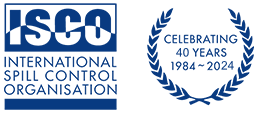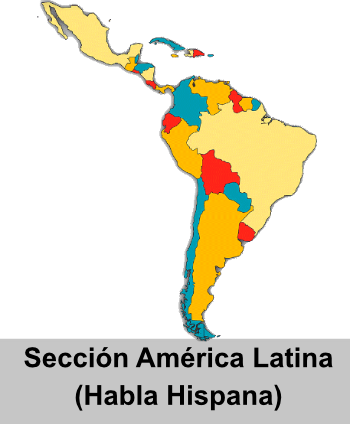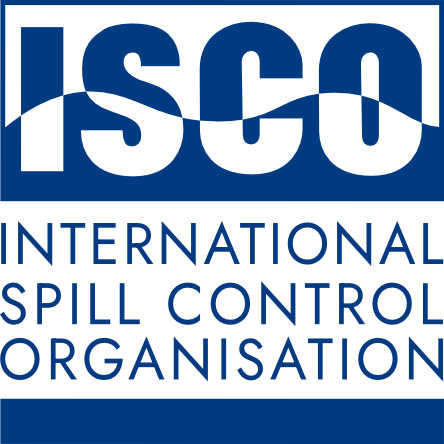Author: Matthew Sommerville
Spectrum Spill Services Limited
ISCO Executive committee, FISCO, and London Ambassador
This short Case Study examines the world first Very Low Sulphur Fuel Oil (VLSFO) incident and the associated response by Mauritius’s people with limited international support during the global Covid-19 pandemic.
The incident and associated response offer important lessons for those engaged in planning for future marine pollution events elsewhere particularly related to use of civil society and international support resources in new ways. For this reason, it is included as a Case Study in upcoming ISCO-OceanPact International Seminar to be held in Brazil (Rio de Janeiro, October 27, 2023).
Background: The 203,130 dwt Panama flagged bulk carrier Wakashio undertaking a ballast voyage from the Lianyungang, China port to load iron ore in the port of Tubarao, Brazil. The ship made a last planned stop in Singapore on 14th July 2020 to take and on bunkers. As the vessel transited on through the Indian Ocean, she deviated from the normal shipping routes bringing her track closer to the island of Mauritius. While the flag state incident report found the vessel was in good mechanical order and navigational equipment was working properly the vessel as the flag state incident report conclusions state grounded due to human factors. (Wakashio-investigation-report.pdf)
As a result, at 19:25 local time on Thursday, July 25, 202O the vessel grounded near Pointe d’Esny on the southeastern corner of Blue Bay in Mauritius. With no crew injuries and no oil being lost initially it was considered that once suitable resources arrived the vessel could be refloated, and the crew remained onboard to assist in that effort. Recent experience in Mauritius with the 2016 Benita another bulk carrier grounded and refloated just 5000m from the Wakashio’ s location supported that potential outcome. In addition, the vessel was only partially grounded and still moving because of wind and waves. However, with the activation of the national plan and the risk of pollution identified the salvage operation focus was on the included the transfer and offload of the bunkers and other oil using a small tanker and as had been done on the Benita 1000lt ISO tanks filled on deck and lifted off by helicopter.
The chain of circumstances and events which led to the incident did not stop after the grounding and the response was complicated by further circumstances and events which provide those managing the response with new challenges, the needs to develop novel solutions and knowledge others can learn from.
These post grounding circumstances and events included:
Spilled Products,
Location,
Covid 19,
Role of Civil Society and International Support.
Spilled Products: In January 2020, the IMO 2020 regulation 18 for fuel oil quality, Annex VI of the International Convention for the Prevention of Pollution from Ships (MARPOL) came into force. The regulation focussed on reducing sulphur in marine fuel oils and as a result sulphur oxide emissions from shipping. The change however partially reset years of knowledge on the fate, effects and response gained on the previous range of marine bunker fuels. This was offset in part with pre change studies of early examples of the new fuels. However, given the specification (ISO standard 8217) allows for variability in how a refinery achieves that specification based on its feedstocks and refinery capabilities. This combines with which depressed global demand changed the available feedstock and resulting product sold in early 2020 compared with those evaluated. In addition, the change indirectly required changes in the lubricating oils, colling systems and other ancillaries of the engines now burning VLSFO and these had not been evaluated in the same way regarding fate if spilled. The cylinder oil for example in this incident producing a sub-surface plume which booms would not stop but when once again contained, as it met the shoreline, produced a surface oil layer.
At the time of grounding the Wakashio had onboard 3894 tonnes of VLSFO, 207 tonne of Diesel and 90 tonnes of lubricants (having taken on bunkers in Singapore) plus the normal range of paints, grease, cleaning products and other small quantities of pollutants which could impacts on sensitive sites. Therefore, in spite years of global experience in marine spills those responding to the Wakashio from government, local bodies, salvors or international experts all would need to gain a new understanding of the properties, fate and potential interactions of the products spilled.
Clearly these lessons are not limited to the Wakashio and with changes in global energy production the nature of products being used, moved, and the locations where it might be shipped, stored, or spilled are changing. Further the knowledge of how these new fuels, biofuels as well as the wider range of lubricants, coolants etc will react, their fate or the containment and recovery issues which might be encounters are changing.
The potential polluter may be called on to support the response and their knowledge of the products and spill response issues. While the oil industry has become a partner with government in the response to oil spills in most countries the same situation does not exist for all the new potential and more widely distributed source of pollution or the potential polluters who operate them. A marine wind turbine contains on average 350lt of lubricants designed to resist biological and thermal breakdown and mixing with water and potentially less easy to recover with some types of skimmers. Something new to consider in exercises about what are the product to be spilled.
The Location: Armed with a map of Mauritius, it would be hard to pick a more environmentally sensitive area to place a grounded ship. The location on the fringe reef of Blue Bay and near two internationally recognised Ramsar sites and nationally important other sensitive fisheries, coral, and mangrove areas, as well as a wildlife (birds, reptile, and tortoise) conservation site at Lle aux Aigrettes and its clear the location could not have been more unfortunate.
Certainly, it would have been unlikely for an exercise to include shallow water, fast currents, breaking waves, corals, and no space to operate or deploy between the casualty and the multiple sensitive resources. Add to that mix that this island was once the home of the Dodo until human intervention led to its extinction and the difficulties for those managing the response are clearly multiplied. Such restrictions, condition in an exercise scenario would likely have been considered unrealistic harsh and rejected in favour of a scenario where the participants could beat the spill and protect the sensitive sites more easily.
Initial efforts focussed on the safety of the crew and the options to salvage the vessel including removing the bunker oils and removal of the sources from the location. Conventional booms were deployed to protect the nearest sites the RAMSARS although no spill was identified until the 6th of August. Then oil was released it proceed north passing the RAMSAR sites and the protection emplaced at with effort and impacting instead on the beaches, mangrove, and conservation areas further afield. Impacts on these were reduced by the vast amounts of improvised booms deployed by volunteers from civil society. By the 11th of August, an estimated 1000m3 had been lost.
Oil had been removed from the tanks at greatest risk by internal transfer, ship to ship transfer and by a constant stream of the few helicopters available in Mauritius lifting 1000lt ISO tanks. Those same helicopters served as the salvage crew transport, equipment delivery and occasional aerial survey. As a result, by the 15th of August when the broke in two the salvage operation prevented the loss of over 75% of the bunkers. Not all the ISO tanks field had been removed but they were on the now hard fixed stern section rather than the bow.
The bow section was later towed off the reef and once de-oiled (oil was removed from hatch hydraulics, winches, and other equipment) was deliberately sunk in a planned location. This action was not without comment but was done with the knowledge that the previous refloated vessel the Benita has sunk while under tow in an unplanned location and after a number of places of refuge where the bow section could be held to make safe had been considered. All of these places of refuge would have created a risk to so far unimpacted areas of the inland and required the diversion for a longer period of the tugs which were still needed to deal with the stern section on the vessel and its potential pollutants (oil, furniture, food, bedding, clothes etc contained in the accommodation block.
Again for those involved in this incident the location was a worst case scenario for those not a potential reminder of the need to train hard and fight east by ensuring exercise and training do not offer easy picks in the strategies and tactics employed but train and test people in making hard choices where no option has no impact.
Covid 19: While the volumes spilled on a global scale were not huge, the product, location and number of sensitive receptors mean that international assistance and support was desirable but the world in August 2020 was at the peak of the Covid-19 pandemic. Neighbouring countries answered the call, as did response organisation and the UN. Under the co-ordination of the Office for Coordination of Humanitarian Aid (UN OCHA) based in Geneva) the UN organised a mission to supplement the existing in-country UN personnel with an international team of disaster, aid, incident management, civil society, coordination, and communication experts. The author was fortunate to be being part of that team deployed as the IMO contribution of an oil spill expert from 8th August until 5th September.
In August 2020 countries were emerging from the first waves of lockdown and travel bans. It would only be later those new variants, second and third waves of lockdown would occur. In Mauritius, the response to the pandemic had been a suspension of all travel into the country. For an island famed for its beauty and connected tourist industry, this resulted in large numbers of people directly or indirectly employed being available at the time of the incident and driven to do what they could to protect the environment on which Mauritius its people and its economy, tourism and their jobs relied.
So, while government resources concentrated on Salvage, RAMSAR sites and points close to the wreck civil society mobilised, organised, designed, produced, and deployed an estimated 40-50km of improvised floating barrier from Baggas, plastic bottles, net, cotton, and string. These barriers did not stop all the oil, but they helped to slow the impact, protect some areas, and hold the oil while the oil recovery was organised. The use of improvised barrier was included in the national contingency plan, and they were employed by the government in response to the Betina in 2016. However, it was only a result of Covid 19 that the number of people (1000’s) required to produce the booms were available.
The pandemic also impacted in the opposite way on the availability and ability to bring in outside equipment and personnel. Starting with the ship’s crew, salvors, and support from neighbours and wider afield. All of whom brought the potential to introduce Covid19 to Mauritius which had been successfully managed to date because of its prompt travel ban, strong quarantine policy and proactive efforts to prevent, detect, test and contact trace all potential infections.
No small step then to consider what to do with twenty crew on the ship, salvors, response personnel and the international support, which was desired, being offered from many nations or to consider how to integrate them in a safe way with the wider community already working on the response. Solution was found and with daily testing, supervision, quarantined hotels, and other measures including the first two weeks in white Tyvek suits the government were able to allow the required support from UN, France, UK, Greece, Japan, and India to be delivered and experts to support the national response.
Again, a scenario which had not been practiced as in most exercise it is common to assume that resources and people can and will be transported to the incident location from within a region, nation or from overseas as and when needed. This policy of Tiered Response was never intended to ignore the potential or risks that resources could not be relocated but in a world of pandemic, more extreme weather events and disrupted transport systems it may be prudent to look again at levels of needed resources, remote support, transport options and if a small number of large Tier 3 bases is better or if a larger number of smaller mor distributed capabilities will offer better resilience.
While in the future we would hope not to see a repeat of the pandemic, there are reasons why we need to look to utilise new ways of working which allow, in additional to the local capabilities, access to knowledge and experience at the outset, not post travel and which avoid the costs (financial and environmental) of flights, risks or movement of people around the world.
Role of Civil Society and International Support: In any response there is a combination of national stakeholders and international support. The national resources are often limited to government bodies, specialist commercial companies, and civil society groups. However, in an incident there are often numbers of new people motivated to be involved and contribute to the response. In the past these may have been limited in ability to coordinate and identify other like-minded individuals.
In the wake of the Wakashio there was a rapid evolution of email, chatgroups, twitter, text and what’s app communications which connected existing groups to wider groups and allowed them to coordinate 100’s of volunteers, plan, identify resource needs, identify resource donors and as a result to establish an improvised boom production line, transport and deployment of the items produced. This may sound like a lot, but it downplays the complexity of what was organised as boom and later skimmer production were not simple one design but were being constantly evolved to match available resources and experience. These evolutions resulted in the incorporation of more buoyancy (plastic bottles), changed boom materials (nets giving way to donated cotton which better retained the Baggas and lighter, shorted lengths of boom more easily deployed and used in more restricted areas. The response centre was only involved on the periphery of these activities as they had started spontaneously and were short lived but became very engaged when it came to the subsequent location, recovery, transport and disassembly of the improvised booms and separation of the various waste streams.
In Mauritius beyond the idea to use improvised Baggas booms the national plan had not explored that what into the when, who, how and why they would be constructed, employed, or integrated with the other activities. Even if this had been considered it is unlikely that the plan would have envisaged the availability due to the tourism industry shut down, willingness or creativity of 1000’s of people from the full spectrum of civil society to achieve what it did until it was experienced directly.
The ability with modern communications to connect, communicate with and co-ordinate hundreds or thousands of people clearly exist, and this can either been used to support the response or to communicate as an alternative to the traditional media.
In the future contingency plans, training, exercises, and incident command will need to have the ability to interface with such resources and integrate their capabilities and efforts into the wider response. At a minimum there is the need to integrate into the response teams individuals who can connect to these external civil society resources and direct them to safe and productive tasks. In the Wakashio effort were made to engage civil society once the less sensitive and publicly accessible baches were cleaned of oil to removing the other pollution and detritus that effected beaches outside the impacted area. The lack of trust, pre incident communications and training meant that this option for a wider environmental benefit and removal of years of human contamination was not widely adopted. Again, can such training, communications and information dissemination be usefully exercised as an alternative to the routine press statement generation elements of and exercise.
Lessons Learned for response and preparedness.
The Wakashio response judged by someone who has spent 40 years in the industry, was on site and in the command centre was not perfect, but it was better than many in much large nations and faced with a number of new and concentrated issues as well as no win scenarios decisions were made and action undertaken which reduce the spilled volume, reduced the impact and limited the damage caused in removing what was spilled and the subsequent recovery.
So, while it is easy to look at incident and identify remotely what was done wrong, could have been done better once armed with hindsight, free of the reality or stress of the actual decision or impact of the debate that examined the options and called this learning.
The Wakashio incident has demonstrated again that spills still happen where they are not expected and that the scenario will not always be easy, the choices simple good or bad. Exercises need to prepare incident management teams and responders for hard scenarios so that they are prepared and resilient in the face of the pressure and stress of a real event.
More useful therefore to look at the significant issues and determine honestly how your response would react, have been trained or have exercised to meet that issue and scenario and choices presented if they arose in your area of interest.
Nonstandard -Spilled Products,
Remote -Location,
Global Pandemic -Covid 19,
Integrated Resources -Role of Civil Society and International Support.
The world is engaged in a process to change how it fuels its needs and as a result, the quantities, nature, and locations where pollutants might be spilled in changing. Covid 19 has woken the world up to the need to collaborate and coordinate at local, regional, national, and international levels but also for local resilience and capabilities rather than reliance on remote or distant capabilities and sources. Global climate change mean there may be a greater need to extreme weather events in which spills may be an issue but one subservient to the needs of people and the available resources.
The ISCO-OceanPact Seminar will include lessons learned and certainly there were, in addition to the visions of the international experts.
Those interested in knowing the details of the Program can access the information on the ISCO website: https://spillcontrol.org/isco-oceanpact- Brazil-international-seminar/
and to register for direct participation in the OceanPact website: https://oceanpact.com/isco-seminar-brazil-2023/.





